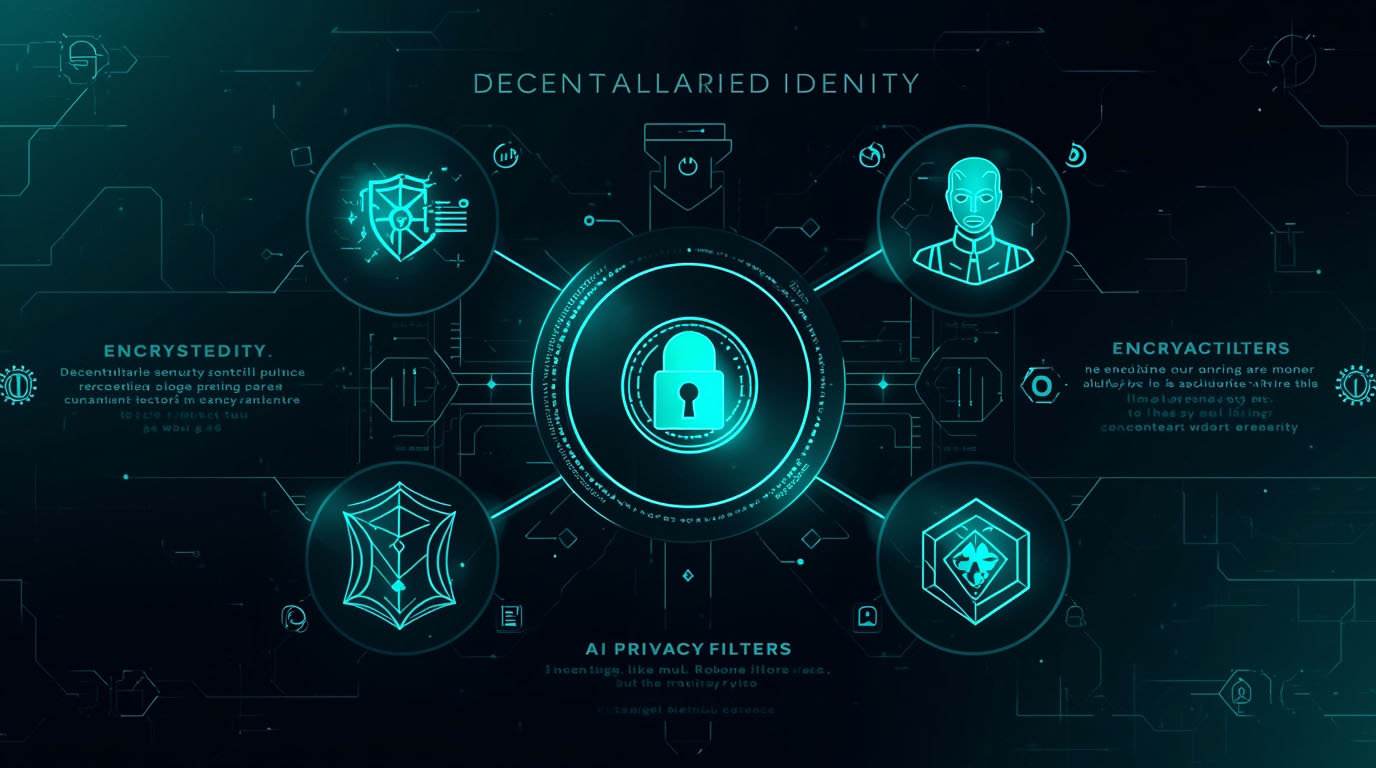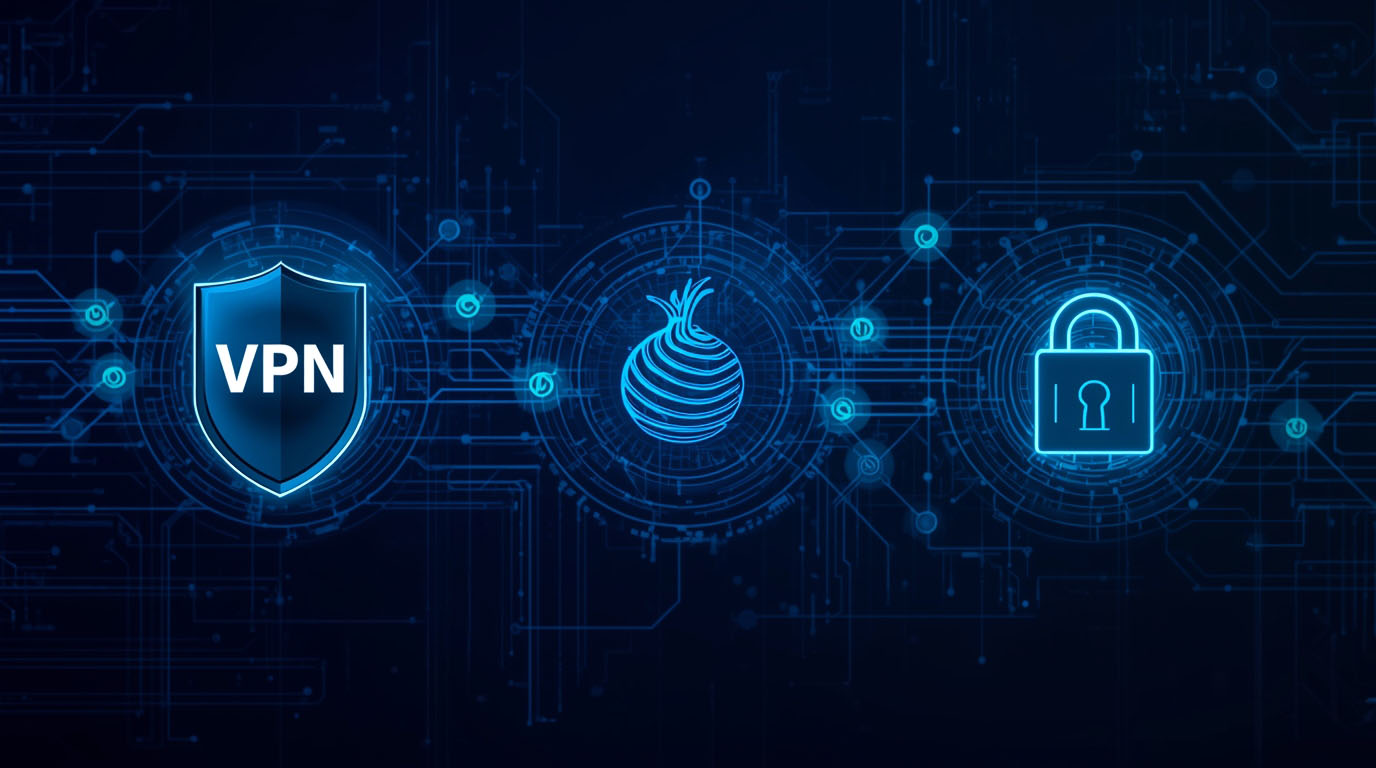🧠 What Digital Privacy Really Means in 2025
In 2025, “digital privacy” is no longer just hiding an IP address or clearing cookies. It’s the full spectrum of how your identity, behavior, and data move across networks, apps, and devices—and who gets to see, store, and profit from that information. Modern privacy spans three intertwined layers: identity protection (minimizing what uniquely identifies you across contexts), data control (governing what is collected, where it goes, and how long it stays), and user rights (legal and practical mechanisms to access, delete, export, and restrict data). The old model focused on obfuscation (e.g., VPN, Tor). The new model emphasizes governance and minimization: collecting less by default, encrypting end-to-end, compartmentalizing identities, and making data flows auditable.
Crucially, privacy now recognizes that metadata—timestamps, device traits, location patterns, interaction graphs—can reveal more than content. A message may be encrypted, yet the who/when/where can still map your life. Privacy also means resilience against profiling: reducing fingerprinting, limiting cross-app identifiers, and using privacy-preserving analytics. Just as important is consent with consequences: informed choices backed by real controls (like revoking app permissions) and enforceable rights (like deletion and portability). Finally, digital privacy has become contextual. You might share more in a work context, less in a health context, and almost nothing in a political context—privacy tools should adapt to each. In short, 2025 privacy shifts from a single “mask” to a system of selective visibility, putting you in charge of what’s seen, inferred, and retained about you.
🔁 From Anonymity to Digital Ownership
A decade ago, privacy advice often began and ended with “use a VPN” or “browse via Tor.” Those tools still matter, but they solve only part of the puzzle: network-level exposure and IP-based tracking. In 2025, the target has moved. Trackers build cross-context profiles from logins, device traits, and behavioral patterns; cloud services retain vast histories; and AI systems mine everything for prediction. The response is a shift from mere anonymity toward digital ownership—controlling not only who sees you now but who controls your data later.
Digital ownership centers on three practices. First, compartmentalization: separate identities for work, personal, finance, research—each with distinct emails, browsers/containers, and app permissions. This stops one context from bleeding into another. Second, data minimization and provenance: only share what’s necessary, keep local copies when possible, encrypt by default, and know where your data lives and travels (cloud logs, backups, third-party processors). Third, revocable trust: use services and protocols that let you revoke access, rotate identifiers, and export or erase data without friction. Tools like encrypted DNS, passkeys, hardware security keys, containerized browsers, and privacy-preserving analytics support this model.
Ownership is also lifecycle-aware. It’s not enough to hide today; you must constrain retention and reuse tomorrow. That means setting deletion schedules, disabling unnecessary telemetry, and preferring providers with transparent retention policies. The goal isn’t to vanish; it’s to decide what’s visible, for how long, and to whom—turning privacy from a static disguise into an ongoing, controllable contract.
🌍 Why Privacy Became a Mainstream Concern
Privacy moved from niche to mainstream because the stakes—and the scale—exploded. AI data scraping and large-scale aggregation made it trivial to collect, correlate, and infer sensitive traits from public posts, purchase histories, location pings, and leaked datasets. Even innocuous breadcrumbs—time of activity, typing cadence, Bluetooth beacons—feed models that predict identity, preferences, and vulnerabilities. Meanwhile, smart devices multiplied sensors in our pockets, homes, cars, and workplaces. Microphones, cameras, accelerometers, and GPS stream constant context; companion apps often transmit telemetry by default. What used to be “online behavior” is now ambient life data.
Economically, surveillance capitalism aligned incentives against privacy: platforms profit by maximizing engagement and ad targeting, which rewards profiling and retention. Technically, fingerprinting matured beyond cookies, using fonts, GPU quirks, network timing, and behavior to create resilient IDs. Socially, privacy risks are no longer abstract: identity theft, doxxing, deepfakes, location stalking, and discriminatory decision systems have turned privacy into personal safety. Regulators responded with new rights frameworks, but enforcement lags innovation, so individuals and businesses must act proactively.
All of this explains the 2025 pivot from single tools to privacy stacks: hardened browsers with isolation containers; encrypted DNS and relays; E2E messaging and email; local AI that filters outbound data; strict permission hygiene; passkeys and hardware keys; and account-level policies that cap retention and disable cross-site tracking. Privacy is now a baseline expectation for consumers, a compliance necessity for organizations, and a competitive advantage for products that make protection simple by design.
🔒 Why VPNs and Tor Alone Are No Longer Enough
For years, VPNs and Tor were the gold standards of online anonymity. They hid IP addresses, encrypted data, and routed traffic through secure channels — but in 2025, those protections only cover a small part of the privacy landscape. Modern tracking no longer depends on where you connect from; it depends on how you behave, what device you use, and what metadata leaks along the way.
Search engines, advertising networks, and analytics platforms now deploy behavioral fingerprinting and AI-based profiling that render older privacy tools partially obsolete. Even when your IP is masked, your browser’s configuration, system clock, GPU signature, and browsing rhythm can still uniquely identify you. Tor and VPNs protect your transport layer, but not your device fingerprint or metadata trail.
This doesn’t mean they’re useless — they remain essential for encrypting data and bypassing censorship — but they’re no longer enough to guarantee true anonymity. Privacy in 2025 requires a layered defense that combines transport encryption with browser isolation, data minimization, AI-assisted privacy filters, and decentralized identity systems that reduce traceable footprints at every level.
![]()
🧩 The Fingerprinting Problem
The web today is fingerprint-hungry. Even without cookies, websites identify users through a blend of hardware and behavioral attributes. These include your operating system version, browser type, time zone, installed fonts, screen resolution, GPU details, and even the speed at which you scroll or move your mouse. Each of these factors might seem harmless, but combined, they form a unique fingerprint — a statistical signature that follows you across websites, even if your IP changes.
Advanced fingerprinting now utilizes behavioral analytics to refine identity verification. AI models learn your typing cadence, scrolling habits, click timing, and even the pressure on touchscreens. These micro-patterns are as distinctive as a digital “handwriting sample.” The problem for VPN and Tor users is that while these tools hide where you connect from, they can’t hide how you interact with the web.
To reduce exposure, privacy experts recommend using anti-fingerprinting browsers like Brave, LibreWolf, or Firefox with strict containerization, along with extensions that randomize or block script-based fingerprints. Virtual machines and temporary browser containers add extra protection by creating fresh digital identities each session. In 2025, true privacy means blending in, not standing out — appearing statistically ordinary rather than uniquely anonymous. You can read more about browser-level privacy strategies from Mozilla’s Privacy & Security Blog.
🕵️ Metadata — The Invisible Threat
If fingerprinting identifies you by pattern, metadata tracks you by context. Metadata is the “data about data” — timestamps, file sizes, device IDs, network latency, location pings, and communication timing. Even when the message content is encrypted (as it is with VPNs or Tor), these byproducts of communication remain visible to servers and network observers.
For example, an encrypted chat reveals when you messaged, how long you typed, who you talked to, and how often you connect. When cross-referenced with public patterns — like your usual sleep cycle or travel route — metadata can accurately infer identity. Governments and data brokers exploit this to map “social graphs” of interaction, identifying individuals within anonymous groups simply by analyzing timing and connection overlaps.
The most effective defenses now focus on metadata minimization: tools that pad communication with random delays, reroute packets through unpredictable paths, and obfuscate size and timing correlations. Some modern messengers, like Session and SimpleX, employ “unlinkable routing”, ensuring each hop knows only the previous and next node, not the sender or recipient.
For Tor and VPN users, that means privacy extends beyond encryption. You must also hide the shape of your activity — your rhythms, frequencies, and metadata signatures. In 2025, privacy is no longer just about hiding content. It’s about erasing the invisible shadows that your digital behavior leaves behind. For practical tips on safeguarding your online activity, visit the EFF’s Surveillance Self-Defense Guide.
⚙️ Emerging Privacy Tools That Go Beyond VPNs
VPNs and Tor are still useful, but 2025 has brought a wave of new privacy technologies that go much further. These tools protect more than your connection — they guard your identity, metadata, and digital behavior. They don’t just hide; they reshape how data is stored, shared, and verified. The focus is no longer on escaping detection but on owning your privacy through transparent, user-controlled systems.
Today’s privacy stack combines decentralized identity systems, encrypted communication layers, and AI-driven protection. Together, they reduce exposure across every step — from login to browsing to app use. Let’s explore three major technologies now defining the next generation of online privacy.
🪪 Decentralized Identity (DID) Systems
Decentralized identity, or DID, allows you to prove who you are without revealing personal data. Instead of handing over details like your name, email, or ID to every site, you verify through blockchain-based credentials that confirm facts without exposing the source.
For example, you can prove you’re over 18 or a verified account holder without showing your date of birth or national ID. The data stays on your device or encrypted on a distributed ledger, not in a central server that could be breached.
DIDs also support self-sovereign identity (SSI) — meaning you own and control your identifiers. Platforms like Microsoft Entra, ION, and SpruceID already offer DID frameworks that link credentials to cryptographic keys. If one app is compromised, your identity elsewhere remains safe.
In 2025, decentralized ID is emerging as a cornerstone of digital privacy. It reduces the attack surface, limits data brokers’ power, and gives users something they’ve rarely had before: control over their digital presence.

🛡️ Encrypted DNS and Private Relay
Even with VPNs, many internet providers can still see the domains you visit. That’s where encrypted DNS and private relay systems come in. They hide DNS lookups — the part of your connection that translates a website name into an IP address — by encrypting requests and separating them from your identity.
DNS-over-HTTPS (DoH) and DNS-over-TLS (DoT) prevent third parties from logging your browsing history. Apple’s iCloud Private Relay, introduced in 2022 and refined through 2025, routes your internet requests through two separate relays. One relay knows who you are but not what site you’re visiting, while the other knows what you’re visiting but not who you are.
This dual-layer system ensures that no single party can reconstruct your full browsing activity. Other privacy-focused services, like Cloudflare’s 1.1.1.1 and NextDNS, follow similar principles. These encrypted DNS systems are now a default layer of privacy for browsers and mobile OSs, filling a gap that VPNs left open.
🤖 AI-Based Privacy Filters
Artificial intelligence has become a guardian of privacy, not just a threat to it. In 2025, many users rely on AI-driven privacy assistants that automatically detect and prevent data exposure. These tools analyze patterns in your browsing, emails, and uploads — flagging anything that might leak sensitive information.
For instance, AI filters can detect when you’re about to share personal details (like an address or ID number) on a risky site and warn you in real time. In workplaces, AI monitors outgoing documents for data leaks and redacts confidential information before it leaves the network.
Privacy-first apps like DuckDuckGo Email Protection and Brave’s AI anti-tracking already use similar logic. But newer systems go further: they learn your habits and adapt to your personal privacy threshold.
These AI tools don’t replace VPNs or Tor; they augment them. They give users an active layer of defense that evolves with threats — transforming privacy from something you set once into something that thinks and reacts with you.
🌐 The Role of the Deep Web in Modern Privacy
The deep web once seemed mysterious. In truth, it built many of the privacy ideas we use today. Behind its hidden networks grew the roots of anonymous communication, encrypted routing, and censorship-resistant data storage. Those experiments shaped the privacy movement that now powers the surface web.
Modern tools like secure messaging, decentralized storage, and onion-style routing didn’t appear overnight. They evolved from years of testing on dark-web frameworks. The deep web became a lab for digital freedom, where privacy-by-design replaced trust-based systems.
These technologies still influence 2025 privacy models. The goal has shifted from hiding everything to giving users real control — a lesson first learned from the early Tor community.
🧅 Lessons From Onion Routing
Onion routing began as a way to move data without exposing its path. Each message travels through several volunteer servers. Every layer removes one piece of encryption, revealing only the next step. No single server knows both the sender and the destination.
This layered model inspired how many modern browsers and relays now handle encryption. Even mainstream platforms use multi-hop connections and segmented encryption chains. These ideas ensure that your browsing data can’t be rebuilt by any one observer.

Tor still operates on this principle, but its design now influences everything from VPN chaining to secure relay networks used by major tech companies. It proved that privacy through distribution works better than privacy through secrecy.
If you want to explore the evolution of these ideas, see the detailed overview of dark web websites that shaped online anonymity

